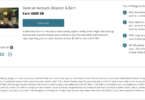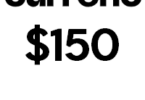We’ve been reporting on the twice-per-year I Bond rate releases. Via Tipswatch, the new rate for May 2025 through October 2025 is estimated to be 3.98%, based on inflation reports. This comprises of 2.88% variable rate and 1.10% fixed rate.
I Bonds May – Oct. 2025
What this means:
- If you already own I Bonds and keep them, you’ll get just 2.88% interest rate for the six month rate period of May 2025 through October 2025 (plus whatever your fixed rate is from a previous buy, which for some people is zero).
- If you buy new I Bonds between May 1, 2025 and October 31, 2025, you’ll likely get around 3.98% for the first six months (2.88% variable + 1.10% fixed). After the six months is over, you’ll get the 1.10% fixed rate added to whatever the future variable rates are at the time.
For comparison sake: the current rate which runs October 2024 through April 2025 is 3.11% – that comes from a 1.20% fixed rate and 1.91% variable rate.
Our Verdict
Someone looking to hold longer term would want to buy before the end of April and lock in the better 1.20% fixed rate (versus the upcoming 1.10% fixed rate). Someone looking shorter term might want to skip the 3.11% which isn’t competitive and buy in on the 3.98% rate in May.
Don’t forget about the 3-month penalty for those who withdraw in less than 5 years. While 3.98% isn’t a bad rate currently – especially given the state tax exemption on I Bonds and treasuries – if you lose a chunk of it to the 3-month penalty the rate isn’t as interesting.
List of Past I-Bonds Rates
For context, here is a review of past I Bond rates that many of us bought into:
- May 2021 through October 2021 – 3.54% (0% fixed rate)
- November 2021 through April 2022 – 7.12% (0% fixed rate)
- May 2022 through October 2022 – 9.62% (0% fixed rate)
- November 2022 through April 2023 – 6.89% (Variable 6.49% + Fixed .40%)
- May 2023 through October 2023 – 4.30% (Variable 3.40% + Fixed .90%)
- November 2023 through April 2024 – 5.27% (Variable 3.97% + Fixed 1.30%)
- May 2023 through October 2024 – 4.28% (Variable 2.98% + Fixed 1.30%)
- November 2024 through April 2025 – 3.11% (Variable 1.91% + Fixed 1.20%)
- (estimated) May 2025 through October 2025 – 3.98% (Variable 2.88% + Fixed 1.1%)






